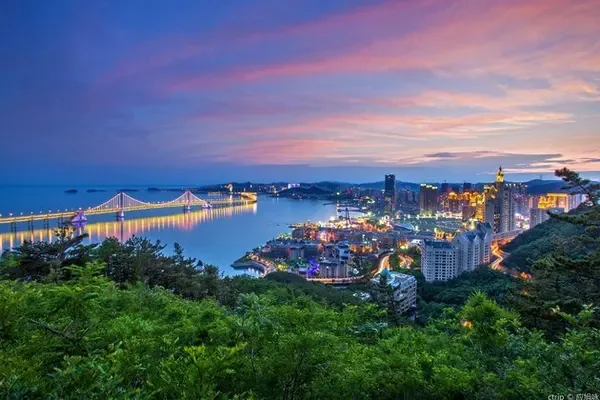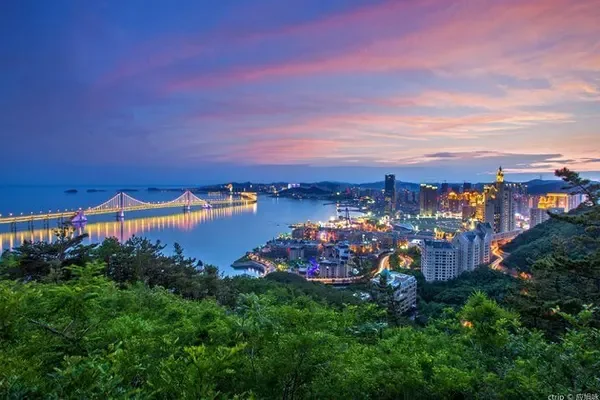Color door
one person
under the grape arbor
quiet afternoon
in time
Gobi
Can stay silent
Can be noisy
calm as grape juice
maybe open the door
Strayed into a mysterious foreign land
maybe close the door
Forgotten in the phantom time
I don't know the gate from birth, and my heart is as firm as a stone.
I heard that it is rare for Alang to get a wife, and there is no matchmaker to fight for her.
The door hidden by the shade of the vine, the door painted in colorful colors, open it, what kind of world will you enter? The door and the pattern have deep mysteries, and the world behind it is worth savoring carefully....
Courtyard in Turpan
In the scorching summer, when you walk into the Uyghur yard, you will always feel very cool. Fruit trees and flowers are planted in the yard, and a large kata (cooling bed) is placed in the shade under the shelf, where people drink tea, chat and entertain guests. This courtyard-centered life is actually the magic weapon for the Uighurs in Turpan to resist the high temperature for thousands of years.
The Turpan Basin is hot and hot, with little rainfall. The Uighurs living here use the unique local raw soil that gels with water as building materials to build single-family courtyards and houses. The courtyard is generally in the front courtyard and backyard style. The main house is located in the middle of the courtyard. The front yard is the living and activity area for the whole family, and the backyard is generally the sundries area, orchard, and vegetable garden. Houses generally have arched flat roofs, with skylights for lighting, no windows on the four walls and only doors, and a wooden verandah is often built in front of the house. There is usually a platform made of raw soil against the wall, covered with exquisite carpets, where you can sit. You can lie down, and the entire courtyard is equivalent to an open living room.
In the courtyard, Uighurs like to plant all kinds of fruits and flowers, and on the ground, they like to use earth bricks to spell out auspicious patterns. Afterwards, the courtyard and the house are connected to form a green, ventilated, and varied courtyard space, which is like an "air conditioner" that regulates the "micro-climate" of the courtyard and brings out the bursts of heat. Cool. There are usually "kata" placed under the grape trellis, which is a unique furniture in Uyghur courtyards. It is a wooden couch wider than a double bed, with blue poles on three sides, covered with beautifully patterned blankets, and placed on small wooden tables. , colored cushions, etc. In summer, the host family likes to rest on it to enjoy the cool air. When guests come, put grapes, snacks and tea sets, and become a cool "living room"
Treat the courtyard as the center of daily life, eat, drink tea, chat, women do housework here, and children are here) Almost all family activities are held in the courtyard. At the same time, the courtyard is also a social gathering place for their family gatherings and receiving relatives and friends. Gathering under the grape arbor, playing Rewafu and Aijiejie, singing and dancing, and having fun. The decoration of Uyghur folk houses fully reflects their aesthetic taste. The two colorful doors are the most exquisite, using techniques such as bordering, decals, and carvings to depict flowers, melons, fruits, snow-capped mountains, and forests in each grid symmetrically. The eaves, corridors, and arched doors and windows in the courtyard are basically made of wood. The woodcarving patterns are mostly made of peach, apricot, durian, lotus and other plants and flowers. The painted patterns are also traditional geometric and flower patterns, and the colors are white, green and Zhou. On the one hand, it is the color advocated by Islam, and it can also bring a cool visual sense in the hot season.
drying room in Turpan
In Grape Valley in Turpan, Lukeqin in Shanshan and other places, there are hollow flower wall drying houses built of adobe bricks scattered on the hillside, which are special houses for drying, and the local Uighurs usually build small drying houses on the flat roof in the courtyard, which is economical and convenient. Drying the raisins in time also forms a unique landscape of Uyghur folk houses.
The shade room, also called the raisin drying room, is an adobe building where grape farmers make full use of the light and heat resources in the Turpan Basin to dry raisins. In summer, fresh grapes can be air-dried into raisins after 30-40 days of drying. In Turpan, almost every grape farmer has such a drying room. It is said that the raisins dried in this way are as green as new and sweet.
The raw soil buildings for drying raisins, the airing rooms are all civil structures, generally flat-roofed and rectangular, the walls are made of soil blocks, and many square flower holes are left for ventilation, and do not let the sun shine directly on the hanging grapes. . A number of "hanging racks" are set on the citron of the airing room, which are fixed with branches, iron hooks or hemp ropes to hang the grapes in the air. The "hanger" should be about half a meter away from the ground, which is convenient for ventilation and cleaning of fallen grapes.
Grapes in Turpan
The hometown of grapes is also the kingdom of grapes. According to historical records, as early as 2,000 years ago in the Western Han Dynasty, Zhang Qian was on a mission to the Western Regions and found that grapes were planted here. Everyone in the world knows that the grapes in Turpan are sweet, but few people know that the earliest grape vines in China are collected in the Turpan Museum. According to the guide of the Turpan Museum, the grape vines inside were unearthed in the Yanghai Cemetery in Turpan in 2003. 5 bud nodes. Experts believe that this is the earliest physical evidence of grape cultivation in Turpan, which confirms the long history of grape cultivation in Turpan. Nurbia Ablimiti, a commentator of the Turpan Museum, said: "Archaeologists tested this precious plant specimen and found that it is a grape with red fruit and round grains and purple. It has a history of 2,300 years. The earliest specimens of cultivated grapes have been found."
Turpan grape planting technology was introduced to the Central Plains in the Tang Dynasty. Seedless white grapes were widely planted in Turpan in Ming Dynasty. "Nongzheng Quanshu" said: "The green grapes of Xifan, the name is not to be seen, and the taste is better than thorn honey. Seedless, it is a different product." A 2300-year-old grape vine represents the development of grapes; here On this ancient and sweet road, grapes came from the west, took root in Turpan, germinated and prospered, and made Turpan known as the Holy City of Grapes in China.
Turpan Museum - The World of Mummy
Turpan Museum is a landmark building in Turpan City. The museum has a very rich collection, second only to the Museum of the Autonomous Region. It is a national second-class museum. It has more than 20,159 cultural relics, including nearly 100 first-class cultural relics. More than 80% of the cultural relics from the ancient times, that is, the more than 1,000 years when the Silk Road was prosperous, came from Turpan, which shows its strength!
On the way of traveling around the world, I can’t remember how many museums I have visited. This time I will come to the Turpan Museum at noon under the scorching sun. First, I want to understand the local history and culture as before, but because there is a special museum here. The exhibition hall - mummy hall, it is said that this is the most complete and largest number of mummy world preserved in Egypt.
There are still many differences between Xinjiang mummies and Egyptian mummies: one is that the formation reasons are different. Mummified corpses in Xinjiang are naturally formed in a special climate and soil environment. Xinjiang is located in the center of the Eurasian continent and has a dry climate. For Turpan, the average annual rainfall is only 160 millimeters, but the average annual evaporation capacity is as high as 3000 millimeters, and the extreme high temperature reaches 50.6 degrees. The second is dry sandy soil with high salt content. Turpan is below 60 meters on average, and the tombs below 5 meters from the surface are like huge constant temperature and humidity boxes, maintaining a moderate environment.
The third is that surface water airborne parasites are difficult to invade into the tomb so that the mummy can be naturally dehydrated before corruption.
Xinjiang is also in line with the world. There are even such popular foreign museum camping night activities. Take the children to stay in this room full of zombies for one night. Thinking about it, I feel that the hairs are standing on end. If someone really brought a doll After staying here for one night, I really admire their courage and courage. I can only say that they can try the plot of the tomb robber notes.
- Garden Life in Turpan, Miscellaneous Notes of Xinjiang


